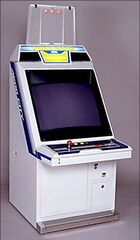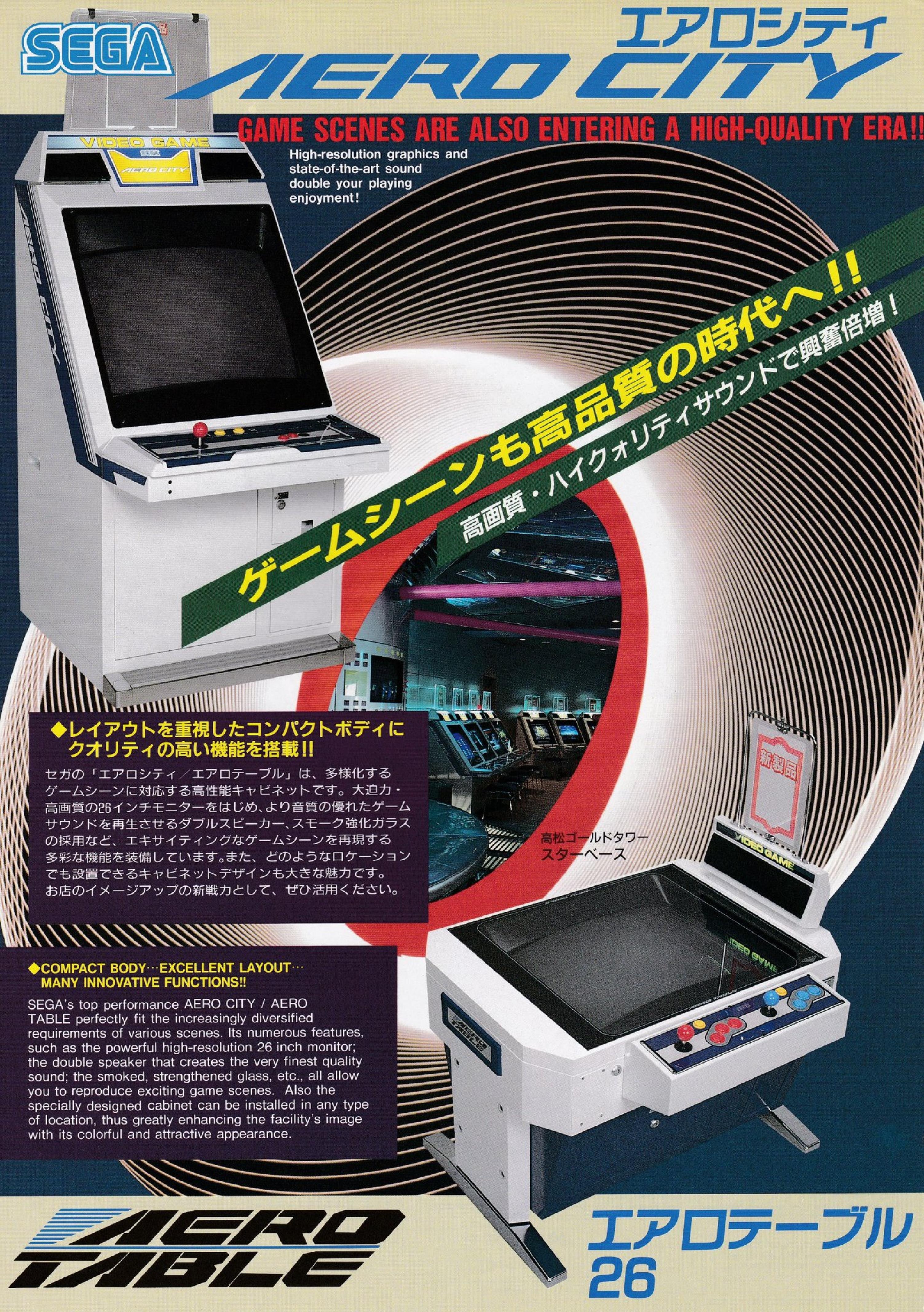Difference between revisions of "Aero City"
From Sega Retro
m (Text replacement - "=Sega" to "=Sega Enterprises, Ltd.") |
|||
| Line 1: | Line 1: | ||
{{Bob | {{Bob | ||
| image=AeroCity Cabinet.jpg | | image=AeroCity Cabinet.jpg | ||
| − | | developer=[[Sega]] | + | | developer=[[Sega Enterprises, Ltd.]] |
| releases={{releasesArcade | | releases={{releasesArcade | ||
| cab_date_jp=1988 | | cab_date_jp=1988 | ||
Latest revision as of 17:18, 11 November 2024

| |||||||||
| Aero City | |||||||||
|---|---|---|---|---|---|---|---|---|---|
| Developer: Sega Enterprises, Ltd. | |||||||||
|
This teeny-tiny article needs some work. You can help us by expanding it.
Aero City (エアロシティ) is a multi-purpose arcade cabinet manufactured by Sega in 1988 as a successor to the City cabinet.
Aero Citys were among the cabinets responsible for the modern look of Japanese arcades during the 1990s and 2000s - no frills, heavily customisable cabinets with a white finish (suggested by some as a way of negating the dark, unappealing perception arcades of the 1980s often had). Functionality wise, it is not too dissimilar from the older City cabinets, though there are number of notable improvements such as the inclusion of a larger 26-inch monitor. Many of the changes were designed to facilitate the then-new Sega System 24 arcade board.
Promotional material
Physical scans
References
| Multi-Purpose Arcade Cabinets Created by Sega |
|---|
| Upright/Sit-down |
| City (1986) | Aero City (1988) | Swing (1991) | Astro City (1993) | Astro City 2 (1993) | New Astro City (1994) | Blast City (1996) | NAOMI Universal Cabinet (1999) | Net City (1999) | New Net City (xxxx) | Lindbergh Universal Cabinet (2007) |
| Versus City (1996) | New Versus City (199x) |
| Large |
| Megalo 50 (1992) | Super Megalo (1993) | Euro Megalo (199x) | Super Megalo 2 (1994) | Megalo 410 (1996) | NAOMI DX Universal Cabinet (200x) |
| Cocktail |
| T-13 (1983) | Aero Table (1988) |

